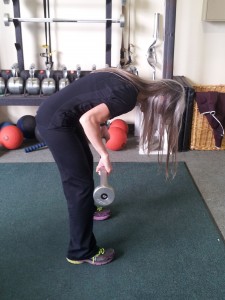Low Spine Stability In Fitness Training
The human spine is a fascinating structure. It serves not only as the anchor to our upper our torso but also facilitates our ability to bend and twist in multiple directions. When necessary, the fitness enthusiast must also learn the merits of spine stability.
A host to multiple muscles, ligaments and nerves it must be taken care of by utilizing the core muscles that it is surrounded by for additional stability while also demonstrating correct posture. This is particularly true when performing any kind of intense physical activity where bending at the waist might be involved.
The vertebrae, or individual segments of the spine, are bunched in small groups that collectively represent either an inward curve (lordosis) or outward curve (kyphosis) in the healthy spine depending on which section along the spinal column they reside. For example, the first “section” (cervical) is comprised of 7 individual vertebra or vertebral bodies located at the base of the skull and curving inward.
The next section curves outward (similar to a very gradual hump) and is knows as the thoracic region of the spine. There are 12 thoracic vertebrae.
The third section, known as the lumbar region, consists of 5 thick, significant, load-bearing segments that curve inward. It is this part of the spine that is highly vulnerable to injury.
The lumbar spine must be kept in its correct anatomical “shape” when performing almost any kind of exercise – especially those which directly (squat) or indirectly (bent-over row) put stress on the low back.
In the world of fitness and especially in resistance training, the term “neutral spine” is used to describe the posture required to keep the lumbar curve stable and in its correct position.
Problems arise when a person puts the lumbar spine at risk by allowing the resistance they are working against, to force this section of the spine to curve in the opposite direction. This frequently happens when the hips are pushed back at the same time that legs are either locked or straightened while bending at the waist. It’s appearance makes the low spine appear rounded instead of indented, or curved inwards.
Unfortunately, the fix for poor lumbar posture isn’t as simple as simple as it sounds. Achieving a neutral spine requires both practice and enough core musculature for an individual to control the correct muscles that maintain the proper curve throughout the work effort.
This particular aspect of training makes the use of mirrors an extremely effective tool. While performing any movement where a hinging or bending of the hips is involved, using mirrors to maintain the proper curve of the lumbar spine plays a key role in practicing the proper mechanics.
As indirect as it may seem, keeping the head tilted back or looking upwards at approximately a 45 degree angle, also creates an adjustment by the lumbar spine to maintain it’s proper cuve.
After all has been said and done, it is important to remember that the human skeleton is designed to maximize mobility and minimize load to any particular area. Keeping the lower back strong and in proper alignment will keep you out of your physicians office and well positioned to enjoy a pain-free summer and improved quality of life.
Bill Victor is the owner of Victor Fitness and Flashpoint Athletic Speed & Agility. He can be reached at victorfitsystems@gmail.com and online at http://VictorFitnessSystems.com or http://theflashpoint.org .


